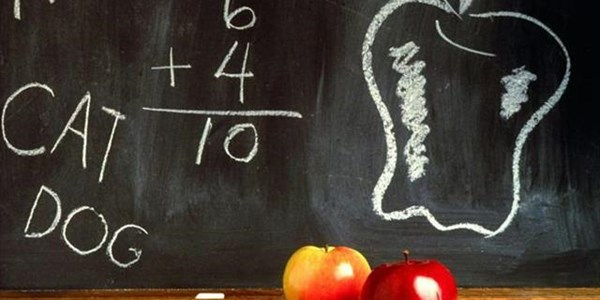General
#SchoolViolence in SA is worse than you think─── 09:02 Fri, 07 Jun 2019

The death of a pupil at Forest High in Johannesburg on Monday has brought school violence into the spotlight again.
Daniel Bakwela, 16, was stabbed to death outside the school, allegedly by a fellow pupil. Two other pupils were also attacked and were hospitalised.
This was not an isolated incident. Since the beginning of the year, there have been several reports of violent incidents of an extreme nature.
Earlier this month, a 16-year-old was stabbed to death by a fellow pupil at a school in Ga-Mamabolo, outside Polokwane. In March, a 13-year-old girl was stabbed in the bathroom at the Tlhabane Technical School in Tlhabane. Also in March, a 19-year-old Grade 11 Mondeor High School pupil died after being stabbed outside the school. And in February, two pupils were seriously injured at Lentegeur High School in Cape Town when two fellow schoolmates allegedly stabbed them on the premises.
But despite these shocking incidents, researchers say that the level of violence in South Africa's schools has not increased in recent years and has remained fairly stable, although it remains high.
In addition, much of the violence that takes place in schools has been going on for generations and is mostly never reported.
But it is widespread and manifesting at a shocking rate. And corporal punishment is not the answer - in fact, it is part of the problem.
Patrick Burton, executive director at the Centre for Justice and Crime Prevention (CJCP), says there hasn't been a marked increase in school violence in recent years.
No spike in violent incidents
"The short answer is 'no'. However, we haven't undertaken a national survey with relation to violence in schools since 2012. That said, we did collect data on violence in schools in 2016 and there was nothing there to indicate that there had been an increase. Levels of violence in schools have been relatively stable," Burton told News24.
UCT psychology professor Cathy Ward agrees. "Violence in schools has always been around. Incidents such as [the stabbing at Forest High] are horrifying. So they achieve much prominence in the media and in our minds. But the school murders we have seen - which are of course terrible - are part of a wide culture of violence in our schools and communities."
A study by the CJCP has shown that violence is widespread in South African schools. "One in five secondary school learners – a total of 22.2% – had experienced any violence while at school in the 12 months between August 2011 and August 2012. This translates to just over a million learners (1 020 597) across the country," according to the study.
According to Burton, most of the violence found in schools are different to the extreme incidents such as the Forest High stabbing.
"Most of the violence is in the form of bullying as well as psychological violence. The problem is that it can escalate and that is where the danger lies. If that behaviour is not recognised by teachers or addressed by the school, with no interventions provided to children, then those situations can escalate into violence that is much more harmful."
Burton says there are also high levels of sexual violence in schools.
Though the CJCP doesn't have specific information, Burton says gang violence can also seep into schools from the communities they are situated in.
"The [Forest High stabbing], though not isolated, was extreme, but I don't think it characterises most of the violence that happens in schools," says Burton.
Ward says where there is a lot of gang violence in a community, it's hard to keep any area of the community neutral territory, and that includes schools. "If gangs are active in a community, children get drawn in from the age of 11. So high school is the period when children get drawn into gangs. So there will be gang violence on the school grounds and the school itself can do little to prevent it."
Violence - including spanking - leads to violence
Ward also says school violence is not limited to the school premises. "It includes violence that occurs when walking to or from school, where the school has no control over what happens.
"Much of the violence includes learner-on-learner violence, gender aggression, bumping and shouting, and sometimes more serious bullying where a group of kids would extort others by, say, blocking the gate unless they pay - these things are quite endemic in our schools.
"Fifty percent of children have been hit by a teacher at school. So what we have is a social system where we resort to violence to resolve problems. Many parents also use corporal punishment to try to discipline kids, but that communicates a message that violence is okay and this is how we solve problems."
"We still have high levels of physical discipline by teachers in schools and that just adds to the problem," says Barton.
At the School Safety Summit held last month, Gauteng education MEC Panyaza Lesufi said corporal punishment had the risk of stirring up more violence.
"We have to come with a mechanism of coming up with alternative punishment for learners. We can't have learners and teachers fighting and we can't encourage violence on the school premises," Lesufi said.
In 2016, the Birth to Twenty Plus (Bt20+) study, led by the DST-NRF Centre of Excellence in Human Development at Wits University, found, among other findings, that 99% of all children have witnessed or have been victims of violence in their home, school and /or community with 36% reporting that they had been victims of all categories of violence studied.
In addition, more than 50% of all children reported being exposed to violence in their home with 66% of parents reporting that they regularly beat their four- to five-year-old children with sticks, belts, straps and shoes.
Save the Children's Resource Centre defines violent corporal punishment as "hitting the child with the hand or with an object (such as a cane, belt, whip, shoe, etc.); kicking, shaking, or throwing the child, pinching or pulling their hair; forcing a child to stay in uncomfortable or undignified positions, or to take excessive physical exercise; and burning or scarring the child".
Violence against children also includes psychological punishment, verbal abuse, ridicule, isolation, and ignoring the child.
Burton says school violence is usually caused by a number of factors. 'We have a solid understanding of what the drivers and predictors of violence in childhood are and those are usually associated with broader socio-economic factors where children are exposed to violence and an increased risk of conflict. Substance and alcohol abuse, exposure to disrupted or abusive families - all these factors tend to interact. But different children respond differently."
South Africa has a culture of violence, Ward says, so we "shouldn't be surprised" when it happens at schools.
Schools are not the ones to blame but can be part of the solution
According to Burton, there are tools in place for schools, but they don't always have the capacity or willingness to utilise those.
"I don't think teachers are necessarily equipped to recognise identifiers of violence or where children might be more vulnerable to victimisation. They might have difficulty recognising antisocial behaviour. Where those behaviours are identified, the response is usually punitive (punishment) that often serve to exclude the child more rather than actually treating underlying symptoms.
"Instead of using a holistic approach to prevent violence, many schools rather just respond to incidents when they escalate.
"But we need to take care not to say this is the schools' fault. I think there are failings within the school system but one also needs to look at other roleplayers like parents, caregivers, law enforcement and communities."
Dealing with the problem is not easy, says Ward. "One could try to declare schools violence-free zones but that does mean that everybody needs to commit to nonviolence. Teachers need to feel confident that there are other ways to manage their classrooms. There are methods available [to discipline children non-violently] but, having been a teacher myself, I know most often teacher training doesn't give you those skills.
"The Department of Education has rolled out a National School Safety Framework that helps schools tackle and reduce violence. But it depends on the schools being able to identify resources in the community that can assist when a child has been a victim of violence, people who can train teachers. This means that principals will need to be active beyond their academic responsibilities.
"The primary responsibility of teachers is to teach children. Then suddenly there is a lot of pressure on them to be social workers and psychologists and teachers aren't trained to do that.
"So schools have been given a framework, but not necessarily the resources."
We have a violent past
In her address at the second School Safety Summit in October last year, Basic Education Minister Angie Motshekga said: "We must be mindful [that] any violent conduct within our schooling environment has dire consequences for the system as a whole. It may lead to fewer learners enrolling for teaching qualifications, mass resignation of existing teachers, and low morale amongst teachers, increased learner drop-out, and low levels of academic performance.
"But, the reality is that we live in a violent society. Therefore, the violence seen at schools accentuates the dictum that schools are in fact the microcosm of society. Just last month [September 2018] the Minister of Police released statistics showing that some 20 336 people were murdered in just one year. So clearly, in this country, violent crime is a common feature; hence it’s also found inside our school premises. This is so because learners are a mirror to the behaviour they see within their communities and homes. As we know our children’s lives are peppered with violence, either in the homes or on the streets. As a nation, we have simply not dealt with our violent past and the impact of societal violence on our children.
"The high level of violence in schools reflects a complicated combination of past history and recent stresses on individuals, schools, and broader communities. Sadly, no amount of state-of-the-art security measures will rid our society of this scourge. We need to talk. We need to heal as a nation," Motshekga said.













